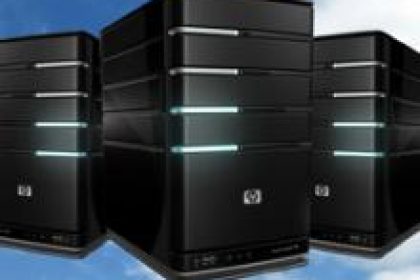
Cloud vendors to the left, cloud servers to the right, cloud services everywhere.
Have you felt lately that the current state of technology is moving so fast that you feel like a jet plane in the clouds? Well, you are both literally and figuratively in the clouds and here is why: The advancements in technology are moving rapidly and it is forever altering the landscape of our world; in the same way birds are no longer the only tweeters. With the advent of cloud virtualization and off-site hosting, cloud vendors are able to do more with less hardware. I would like to simplify cloud services so that we can truly look at it from a 10,000 ft. cloud-based view.
As an old-timer once said, “Back in the old days”, there were server farms. This was usually a large warehouse with thousands of servers stacked up in neat rows, just like growing corn or vegetables but with electronics instead. This type of environment and layout was used for larger companies to house their servers and data all around the world. Smaller companies had their own server and mainframes located within the walls of their building, in a data center. Each time they needed to add capacity they would have to call a vendor, order another server, an operating system and ultimately start configuring it from scratch. 40 hours later, presto, you had a server ready to go, with all the programs and security necessary to accommodate the needs of your business.
Fast forward to today and the technological recipe of cloud IT service companies can do more, with less. You start with one effective piece of equipment that can cost half or less than half of the price of the 5 or 6 servers you once had to purchase, maintain and warranty. Then you add a dash of virtualization-Hypervisor, which is a fancy name for server management software loaded before operating systems. This allows you make your equipment look, behave and operate as if it were 5 or 6 servers through virtualization. You can now bake virtual cloud servers with any combination of ingredients – even something as small as a Linux configuration with 1 GB RAM and 500GB hard drive space that can be monitored from a central collector. Once you have the layout of your virtual servers, you then add the Operating system, programs you would normally use, and presto you now have multiple cloud servers located virtually inside of a single physical server. This type of environment allows you to add, copy, remove and create a new virtual server on the fly, which would have taken hours or days in the past.
How does this affect our work force?
Since there are fewer servers physically and because they are located in one common cloud means fewer locations, less traveling, less maintenance. That all equates to fewer people needed to handle the same number of virtual servers located in the cloud. Your work force is now reduced from 5 network administrators down to one admin to handle the same hardware and software. All of this equates to a better ROI and lower costs to perform the same IT functions.
Where are the Clouds?
In a nutshell, a cloud company will take this technology and implement it by converting your physical server to a virtual server and host it remotely with a cloud provider. Cloud technology also enables swift and efficient data retrieval through the deployment of advanced compression protocols. These protocols allow high-availability access to your virtual applications and data from any PC, mobile phone, iPad, Droid, or tablet without having to be physically at your office. You can be anywhere in the world with an internet connection and gain control of your company documents, email and other applications necessary to run your business at a fraction of the cost of traditional methods, or more cumbersome ways of accomplishing the same thing.
Louie Schwall
CEO, Computer Network Consultants, LLC.




